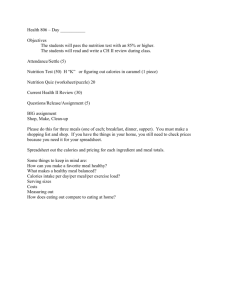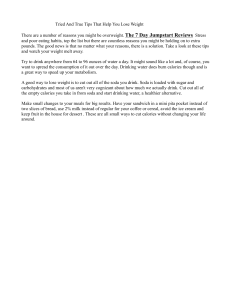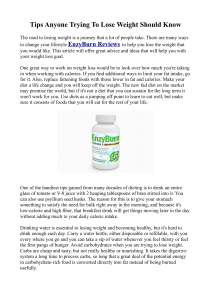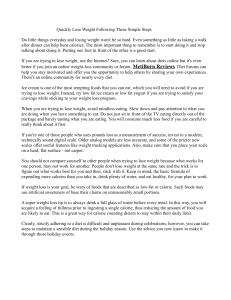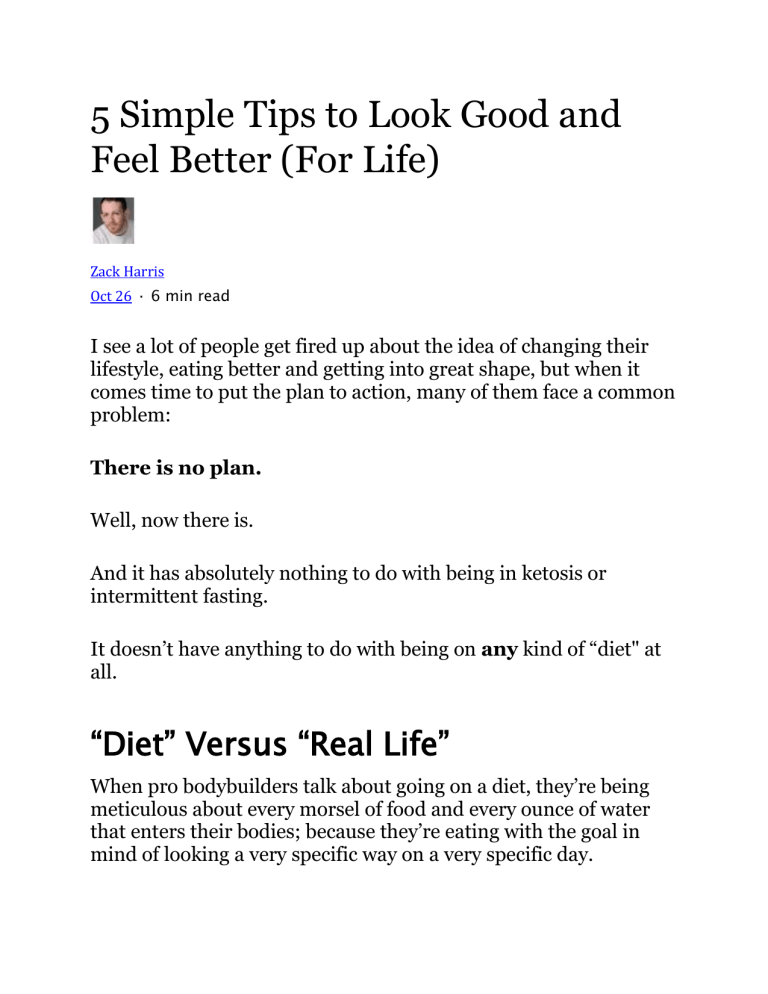
5 Simple Tips to Look Good and Feel Better (For Life) Zack Harris Oct 26 · 6 min read I see a lot of people get fired up about the idea of changing their lifestyle, eating better and getting into great shape, but when it comes time to put the plan to action, many of them face a common problem: There is no plan. Well, now there is. And it has absolutely nothing to do with being in ketosis or intermittent fasting. It doesn’t have anything to do with being on any kind of “diet" at all. “Diet” Versus “Real Life” When pro bodybuilders talk about going on a diet, they’re being meticulous about every morsel of food and every ounce of water that enters their bodies; because they’re eating with the goal in mind of looking a very specific way on a very specific day. And then the diet is over, and they’re no longer concerned about rather or not they should eat a 50 calorie Fun Size Snickers bar. Unless you, too, are dieting for a short period of time to look your absolute best for a specific contest or event, don’t major in the minors. At the same time, if you’re eating fast food two or three times a day, you shouldn’t try to 100% eliminate it from your life within the first 24 hours. It’s going to needlessly discourage you and set you back before you even get started. The following five tips will show you how to scale your approach to fitness & nutrition with small, gradual changes that, while simple, have been utilized over the years to help people go from flabby to fit, skinny to jacked, and everything in between. They’re time tested and they work. I’m living proof. I never saw my lower abs until my late 20’s. “Genetics” are not as life defining as you might think once you’re armed with the right information. 1. Start with a glass of water. Really. Wake up. Walk to the kitchen. Grab your cup. Make sure the cup holds at least 16 ounces. Fill the cup with fresh water. Drink it. Do this every day. This is one of the first habits I instilled over five years ago and it still sticks with me today, no matter where I am or what I’ve got going on in my life. It’s a great “insurance policy" to help get your water intake closer to where it should be every day . It’s also a great way to remedy the infamous “brain fog" so many of us suffer from when dehydrated — especially in the mornings. Sounds really simple, because it is. Start the morning off right and you’re much more apt to carry that positive momentum with you through the rest of the day. 2. Go take a walk. After you drink your water, walk out of your house and set a timer for five minutes. Walk down the street until the timer goes off, then turn around and walk back. You just completed a solid 10 minutes of morning cardio. The next day, do the same thing, except set the timer for six minutes. Walk down the street until the timer goes off, turn around, walk back, and voila — you’ve now completed 12 minutes of cardio. Repeat the same pattern on day three; this time, setting the timer for seven minutes.. You get the point. Keep repeating this pattern until you’ve built up the habit of taking a 20 minute walk every day. Commit to this five days a week. “What if it’s raining outside?” Then go later in the day, or resort to walking indoors on a treadmill if need be. However you get it done, it’s still 20 minutes — find the time. You can do it. 3. Take it one meal at a time Getting back to the fast food analogy; instead of going from the McDriveThru three times a day to never at all, why not try to cut it down to just once a day at first, and eventually, once a week? Why not just start with a single meal? After you’ve had your morning glass of water and gotten a walk in, keep that momentum going and take a look at your breakfast. Give yourself a list of healthy options to choose from and stick to that list. Choose foods that you enjoy and can consistently eat. Using myself as an example, my list would look something like this: Eggs Oatmeal Greek yogurt Fresh fruit Milk Peanut butter Kodiak Cakes (look ‘em up) Protein powder (yes, I actually enjoy it) Those are some of the foods that I like. They’re certainly not the only things I’ll ever “allow" myself to eat; those are just a few staples that I’ll rotate in and out over time. Your list could be totally different. Get into the habit of making wiser choices during breakfast and don’t concern yourself with any other meals for a while. After a few weeks, start auditing your lunches in the same fashion. Then take a look at dinner. Then look at what you may be doing in between your main meals — such as sugary sodas or random junk food — that could be sabotaging your progress. Reframe the way you approach your day one step at a time — it truly doesn’t have to be “all or nothing" right off the bat. Tips 1 through 3; that’s an overhaul to your entire morning routine in and of itself. That’s a victory. 4. Get an idea of how much you are (or aren’t) actually eating When you’re just getting started, I recommend keeping a food log in order to give yourself a general idea of what your daily nutritional habits even look like. Experience has shown me that many people — myself included — either grossly underestimate or overestimate how many calories a day they are actually taking in. Track your caloric intake — either with an app or pen & paper — over the course of a week. See how many calories you’re taking in on average. If you’re someone that’s trying to lose weight, start by reducing that number by 200–300 calories per day. Consider this: a single 20 ounce soft drink contains approximately 270 calories. If you’re a soda drinker, achieving the caloric deficit outlined above can be accomplished as easily as cutting out a single soda per day and changing nothing else. Measure your progress over the weeks that follow with a tape measure, a mirror, a scale — write it all down so you can see the tangible changes you’re causing — but most importantly, pay attention to how much better you feel every day. Conversely, if you’re somebody that’s having a hard time putting on weight, I’d give you the same advice, except in reverse. Add 200–300 quality calories per day to start, and adjust from there. Bottom line: It’s much easier to get where you’re going if you know where you’re starting. 5. Don’t self sabotage The biggest mistake you can make is to let one “less than ideal" day cascade into a series of poor decisions. A lot of people will slip up on a single meal and think “well, I blew it. I was supposed to eat grilled chicken and broccoli for lunch, but instead I ate McDonald’s. Too late now, guess I’ll eat this box of Oreos, too.” Don’t fall into that trap. Treat these minor “cheats” like the isolated incidents they are. You’re going to miss a day here and there. I miss a day here and there. Arnold Schwarzenegger misses a day here and there. EVERYBODY does. That is okay. Don’t mess up one single day and think it means that you’ve somehow undone all of your progress thus far. YOU HAVEN’T. Don’t beat yourself up over it. Get back to business the next day like nothing ever happened. Forgive yourself and move on. This is only the beginning .. These are just five steps of many you can take to bring your level of overall health and fitness to new heights; but for someone brand new to the “self care" game in search of a “checklist” to get them started, this is a great place to begin. In summary: Drink water every morning, no matter what Start taking walks Change your eating habits one meal at a time Count your calories (but don’t obsess over them) Understand it’s never going to be a perfect process, and that’s just fine. After you’ve crushed these five tips, the sky’s the limit. Use the discipline and confidence you’ve gained to attack the weightroom; to play sports; to explore the outdoors; most importantly, to do what it is that makes you happy and keeps you moving for the rest of your life. We’re in this for the long haul, and I hope you took something away from this that will benefit you 50 years from now as much as it does today. )

